About half a year after the “normal” e-Tron arrived this spring the Audi e-tron Sportback , which is essentially differentiated by the rear that descends more sharply, which creates a sportier image, even if giving up 2 cm in height in the rear seats, not preventing 1.85 m tall occupants to travel without breaking up the hairstyle.
And with the same pleasant absence of intrusion in the floor in the center because, as is the case with base-built electric cars (and with a dedicated platform), this zone is practically flat on the e-Tron. Admittedly, the middle seat remains “third” as it's a little narrower and has a harder padding than the two sides, but it's much nicer to wear than on a Q5 or Q8, for example.
On the winning side, the e-tron Sportback 55 quattro, which I drive here, promises a range of 446 km, that is to say 10 km more than the “non-Sportback”, courtesy of more refined aerodynamics (Cx of 0.25 in this case against 0.28).
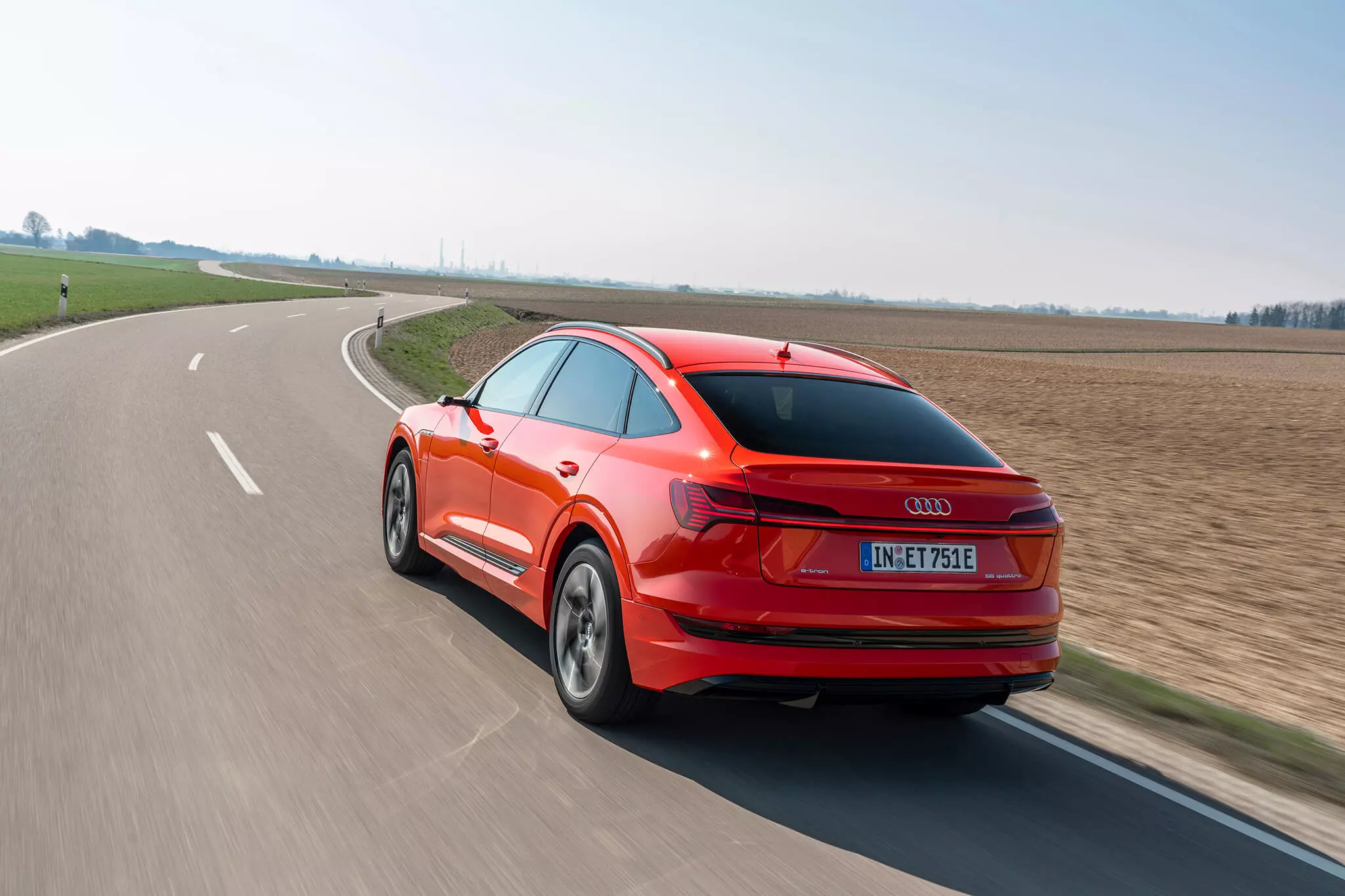
A little more autonomy
However, it should be clarified that, already after the launch of the “normal” e-Tron, the German engineers managed to smooth some edges to extend the autonomy of this model a little more, since — remember — WLTP range at launch was 417 km and now amounts to 436 km (another 19 km).
Changes that are valid for both bodies. To know:
- a reduction in friction losses caused by the excessive proximity between the discs and the brake pads has been made;
- there is a new management of the propulsion system so that the entry into action of the engine mounted on the front axle is even less frequent (the rear one gains even greater prominence);
- the battery utilization range was extended from 88% to 91% — its useful capacity rose from 83.6 to 86.5 kWh;
- and the cooling system has been improved — it uses less coolant, which allows the pump that drives it to consume less energy.
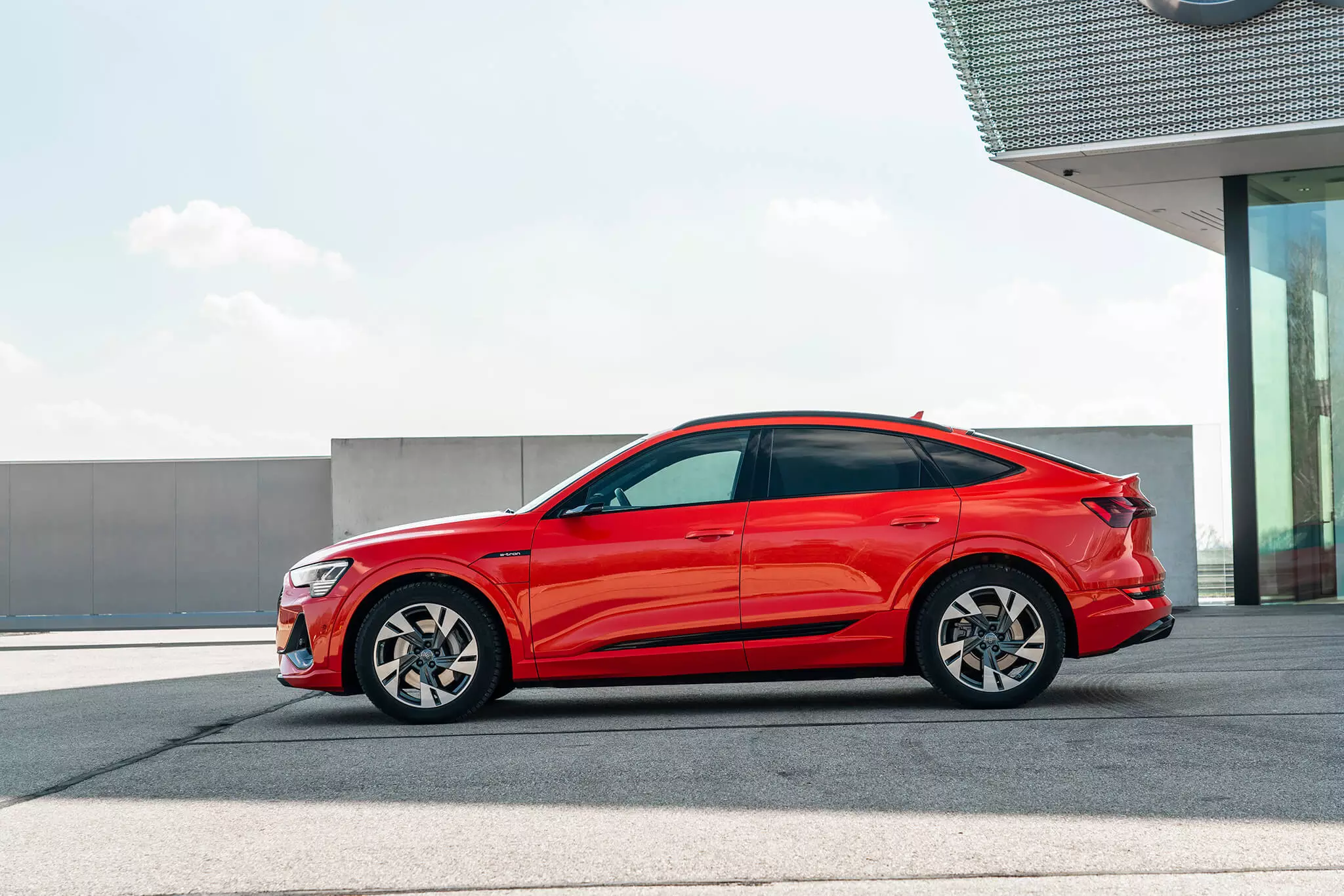
In terms of proportions, the length (4.90 m) and width (1.93 m) do not vary on this e-tron Sportback, the height being just 1.3 cm lower. It's the fact that the roof drops earlier at the back that steals some of the volume of the trunk, which goes from 555 l to 1665 l, if the backs of the 2nd row seats are vertical or flat, against 600 l to 1725 l in the more familiar version.
Congenital in electric SUVs, because the huge batteries are tucked away underneath, the charging plane is quite high. There is, on the other hand, a second compartment under the front bonnet, with 60 liters of volume, where the charging cable is normally also stored.
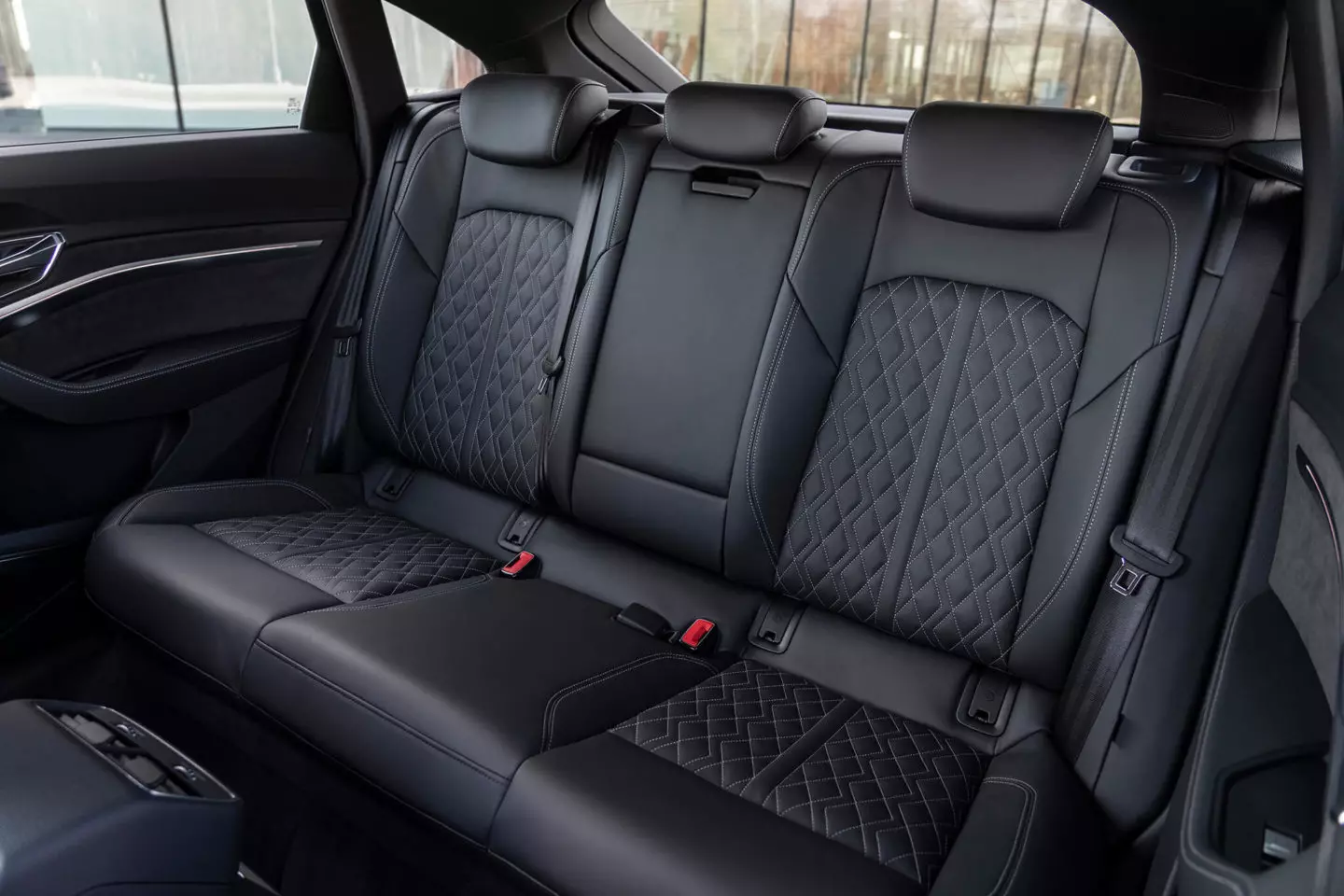
The first thing you notice when you look at the e-Tron Sportback 55 quattro is that it's a more conventional looking car (even than direct rivals Jaguar I-Pace or Tesla Model X), which doesn't scream “look at me, I'm different, I'm electric” as has almost always been the case since the Toyota Prius shook the world 20 years ago. It could perfectly well be a “normal” Audi, with dimensions between a Q5 and a Q7, using logic, a “Q6”.
A world of digital screens
Audi's benchmark build quality prevails in the front seats, noting the existence of up to five digital screens: two for the infotainment interfaces — the top with 12.1", the bottom with 8, 6” for air conditioning —, the virtual cockpit (standard, with 12.3”) for the instrumentation and the two used as rear-view mirrors (7”), if fitted (optional at a cost of around 1500 euros).
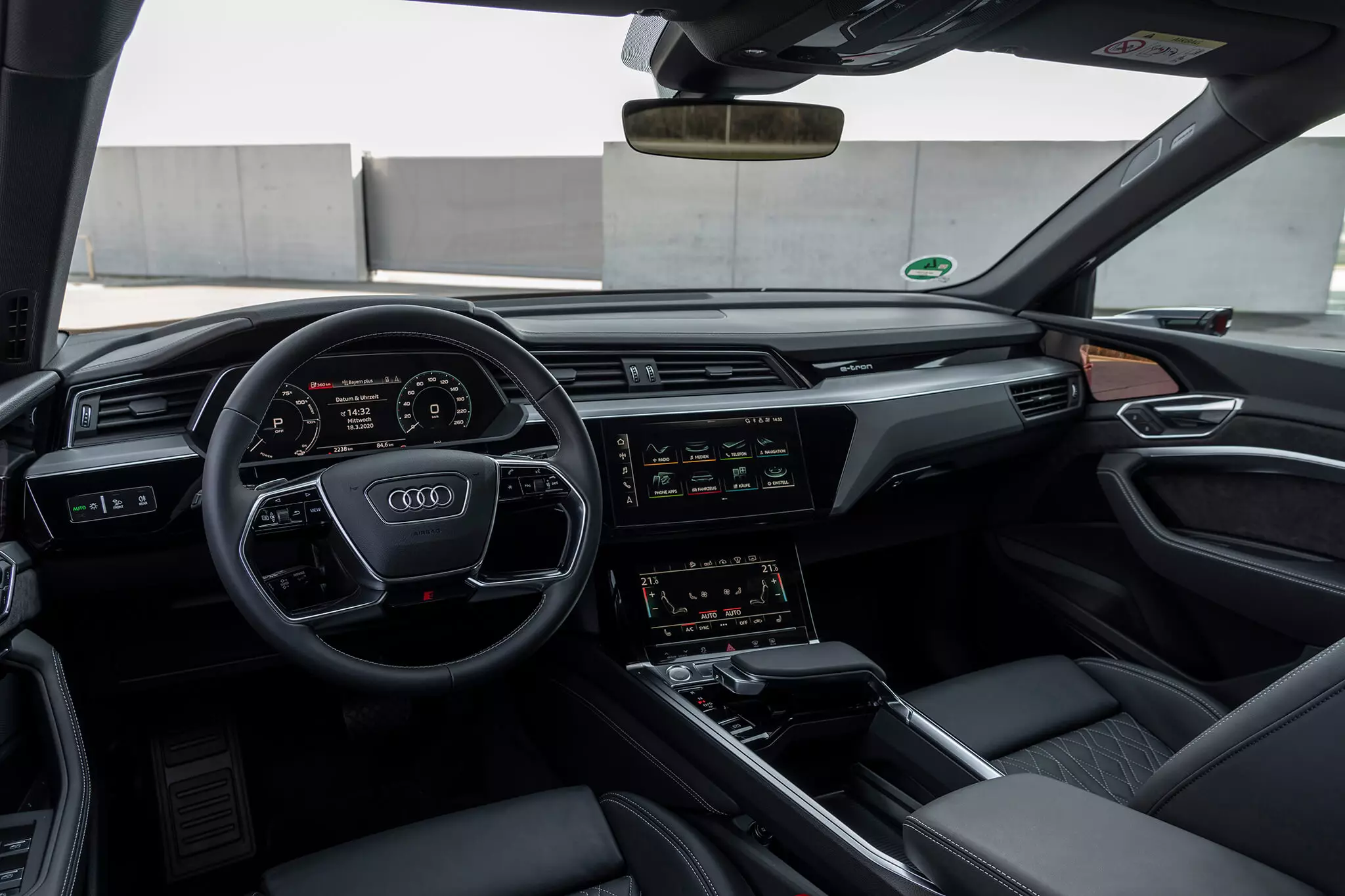
With the exception of the transmission selector (with a different shape and operation from all other Audi models, and can be operated with your fingertips) everything else is known, serving the German brand's objective of making a "normal" SUV, only that powered "batteries".
These stacks are placed between the two axles, under the passenger compartment, in two rows, a longer upper one with 36 modules and a shorter lower one with only five modules, with a maximum capacity of 95 kWh (86, 5 kWh “net”), in this version 55. In the e-tron 50 there is only a row of 27 modules, with a capacity of 71 kWh (64.7 kWh “net”), which gives 347 km, which explains that the total vehicle weight is 110 kg less.
No 55 (number that defines all Audis with 313 hp to 408 hp of power, regardless of the type of energy used to move them), the batteries weigh 700 kg , more than ¼ of the total weight of the e-Tron, which is 2555 kg.
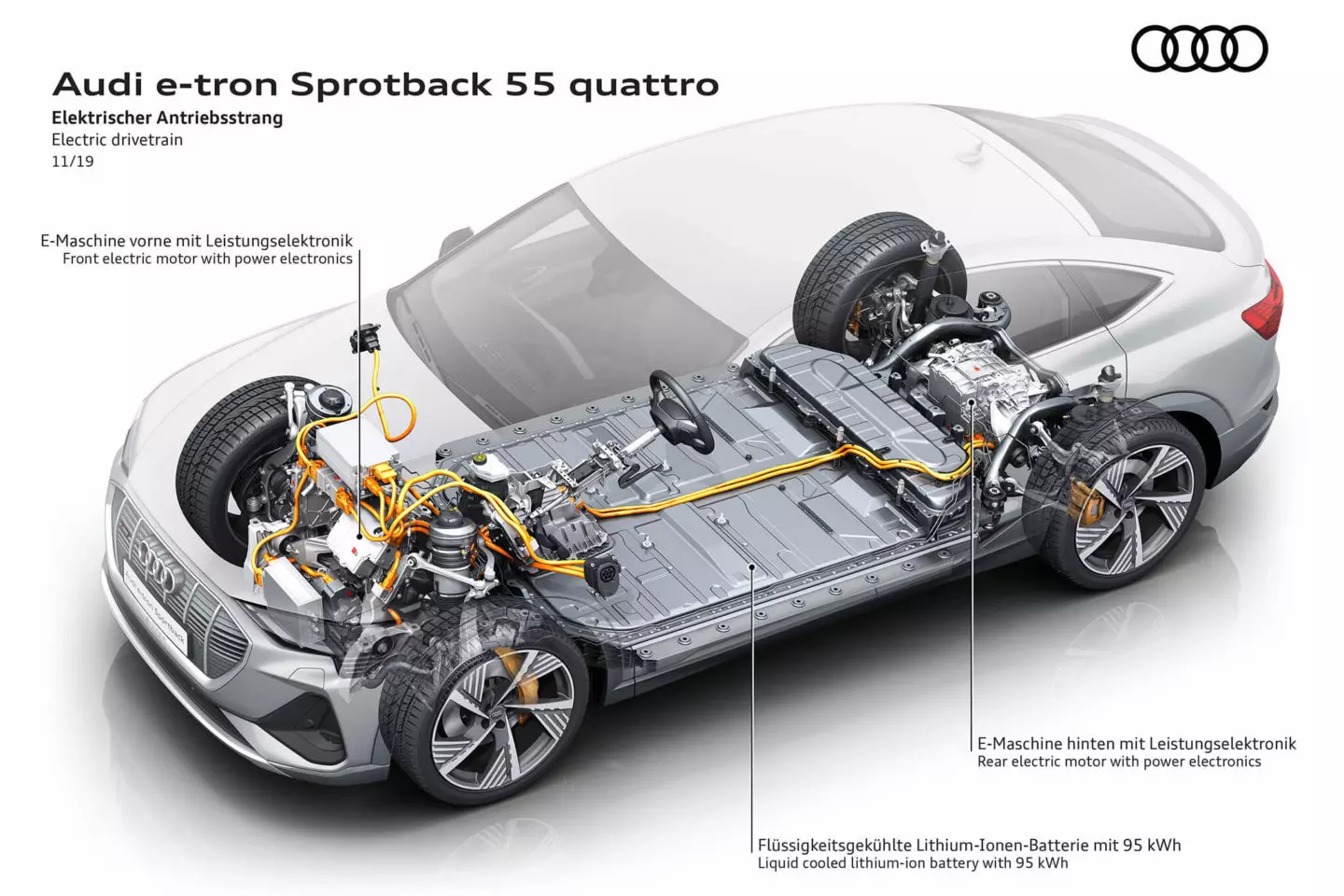
It's 350 kg more than the Jaguar I-Pace which has a battery of almost the same size (90 kWh) and weight, with the huge difference over the tipper due to the fact that the British SUV is smaller (22 cm in length , 4 cm in width and 5 cm in height) and, above all, because of its all-aluminum construction, when Audi combines this lightweight material with (a lot of) steel.
Compared to the Mercedes-Benz EQC, the weight difference is much smaller, just 65 kg less for the Mercedes, which has a slightly smaller battery, and in the case of the Tesla it is comparable (in the American car version with a 100 kWh battery) .
Trams in a hurry…
The Audi e-Tron Sportback 55 quattro uses an electric motor installed on each axle to ensure locomotion (and a two-stage transmission with planetary gears for each engine), which means that it is an electric 4×4.

The total power in D or Drive mode is 360 hp (170 hp and 247 Nm from the front engine and 190 hp and 314 Nm from the rear) — available for 60 seconds — but if Sport mode S is selected in the transmission selector — only available for 8 seconds straight — maximum performance shoots up to 408 hp (184 hp+224 hp).
In the first case, the performance is very good for a weight of more than 2.5 tons — 6.4s from 0 to 100 km/h —, in the second even better — 5.7s —, the instantaneous maximum torque being highly valued up to 664 Nm.
In any case, still far from what Tesla achieves with the Model X, almost in the field of ballistics, which in the more powerful 621 hp version shoots up to the same speed in 3.1s. It's true that this acceleration can be “nonsense”, but even if we compare it to the Jaguar I-Pace, the 55 Sportback is a second slower in that start.
best in class in behavior
These two rivals outperform the e-Tron Sportback in speed, but they do it less well because they lose acceleration capacity after several repetitions (Tesla) or when the battery drops below 30% (Jaguar), while the Audi continues to maintain its performance even with the battery with a residual charge of only 10%.
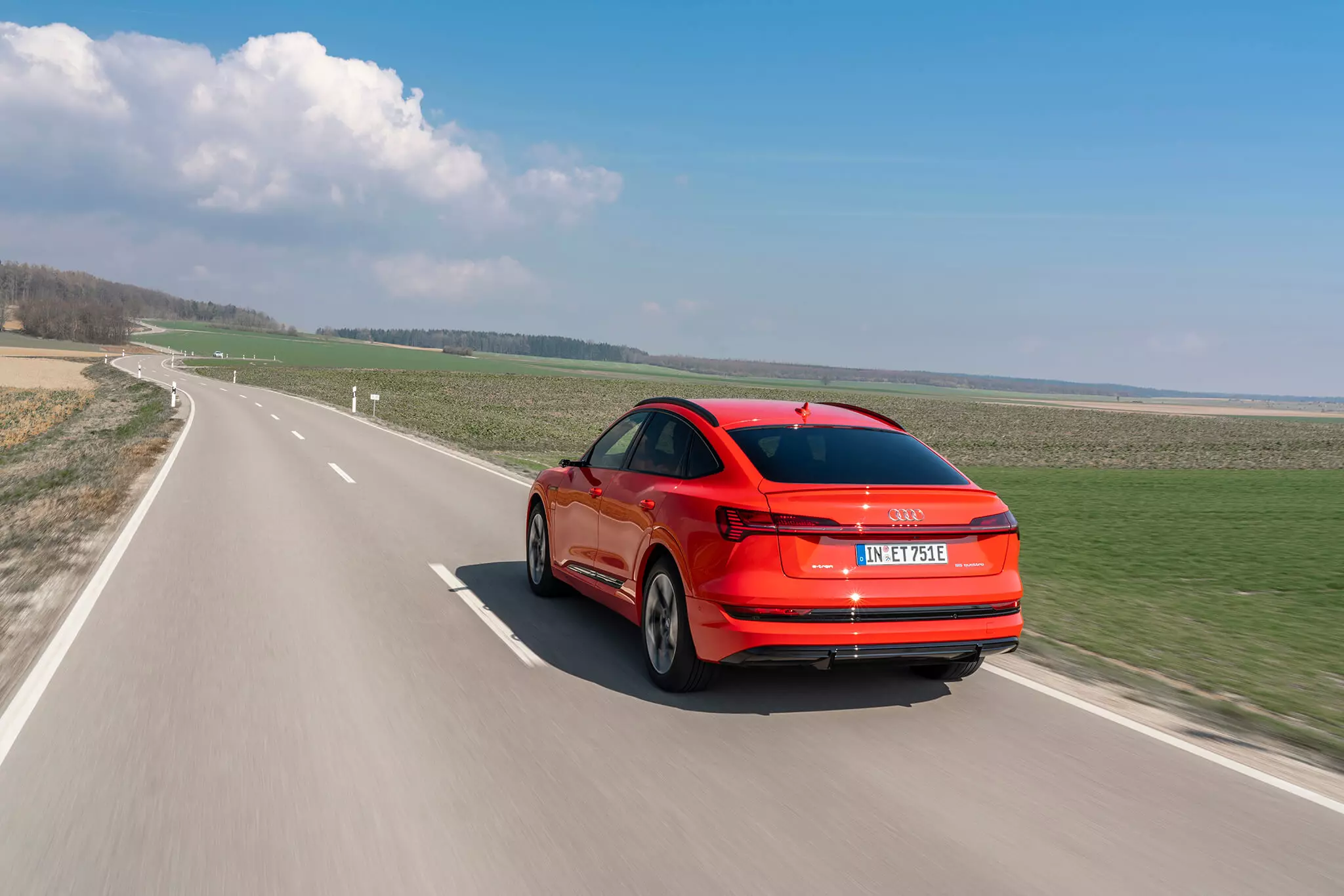
Only 8% is the S mode unavailable, but the D is even the most recommended for everyday use — the S is much more abrupt, especially for passengers who are easily surprised by acceleration levels that compromise the tranquility of the journey.
Two examples to quantify the conceptual advantage of the e-Tron Sportback in this domain: on the Tesla Model X after ten full accelerations, the electrical system needs a few minutes to “recover its breath” and not, immediately, be able to reproduce the announced performances; in Jaguar with a battery at 20% of capacity, recovery from 80 to 120 km/h can no longer be made in 2.7s and passes to 3.2s, equal to the time that the Audi needs to make the same intermediate acceleration.
In other words, the performance of the German car is quite satisfactory and it is frankly preferable to always have the same response than to have high and “low” performance, even in terms of driving safety.
Another aspect in which the e-Tron Sportback is superior is in the transition from regenerative braking (in which deceleration is converted into electrical energy sent to the batteries) to hydraulic (in which the heat generated is dissipated by the brake discs), almost imperceptible. The braking of the two rivals mentioned is less gradual, with the left pedal feeling light and having little effect at the beginning of the course, becoming significantly heavier and more abrupt at the end.
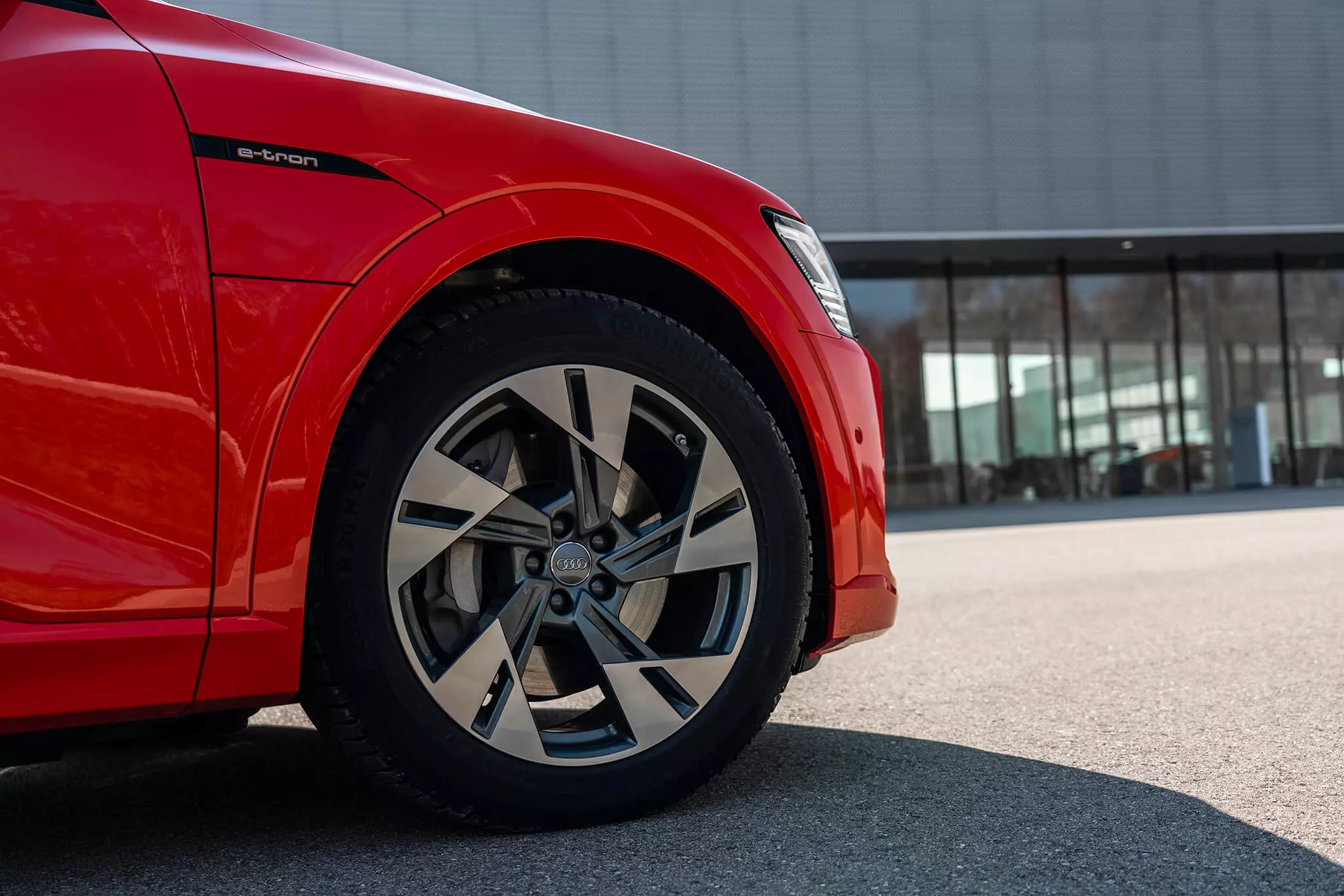
The protagonist of this test also allows three levels of recovery, adjustable through paddles placed on the back of the steering wheel, which oscillate between no rolling resistance, moderate resistance and very strong, enough to enable the so-called "one pedal" driving — once the driver gets used to it, the driver doesn't even need to step on the brake pedal, the car always coming to a standstill by releasing or releasing the load on the accelerator.
And, still in the domain of strengths, it is clear that the Audi is the quietest in terms of rolling because the sound insulation of the cabin is excellent, so that aerodynamic noise and the contact between the tires and the asphalt are, almost all, on the side. outside.
TT with a 90 000 euros tram? You are fit for this...
Then there are more driving modes than is normal at Audi — seven in total, adding an Allroad and an Offroad to the usual ones — with an influence on engine response, steering, air conditioning, stability control and also air suspension, which equips them all. the standard e-Tron.
In Offroad mode the suspension goes up automatically, a different traction control programming is made (less interventional) and the slope descent assistance system is activated (maximum speed of 30 km/h), while in Allroad mode this does not happen in this The latter case and the traction control have a specific operation, halfway between normal and Offroad.
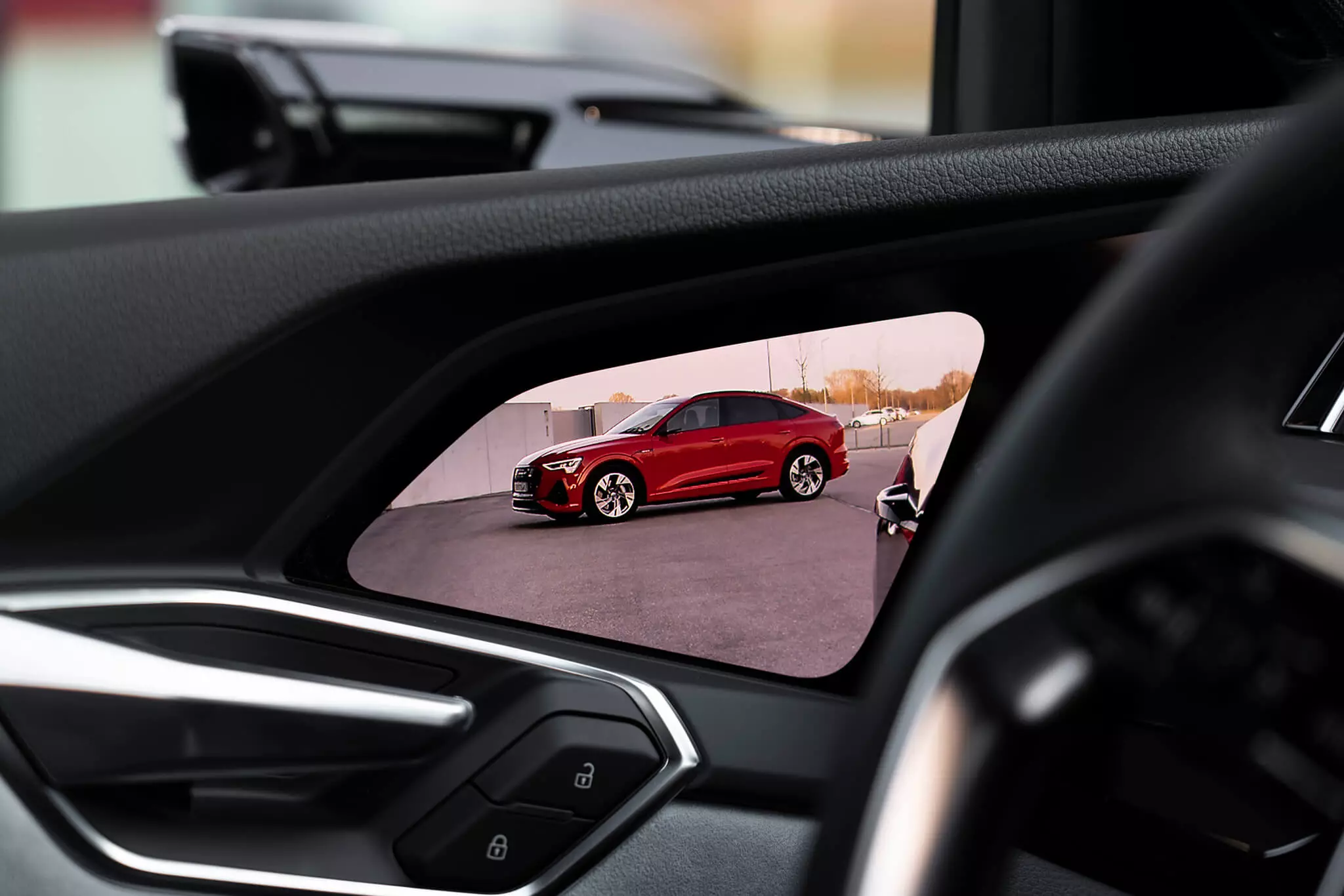
Suspension (independent on two axles) with air springs (standard) and variable-hardness shock absorbers help to cushion the naturally firm roll of a 2.5-tonne car. On the other hand, it improves aerodynamics by making the bodywork automatically lower 2.6 cm at cruising speeds.
It can also climb 3.5 cm when driving off-road, and the driver can manually climb an additional 1.5 cm to climb over bulkier obstacles — in total the suspension height can oscillate 7.6 cm.
In fact, this experience behind the wheel included a moderate all-terrain foray in which it was possible to see that the intelligent management of energy delivery and selective braking on all four wheels works perfectly.
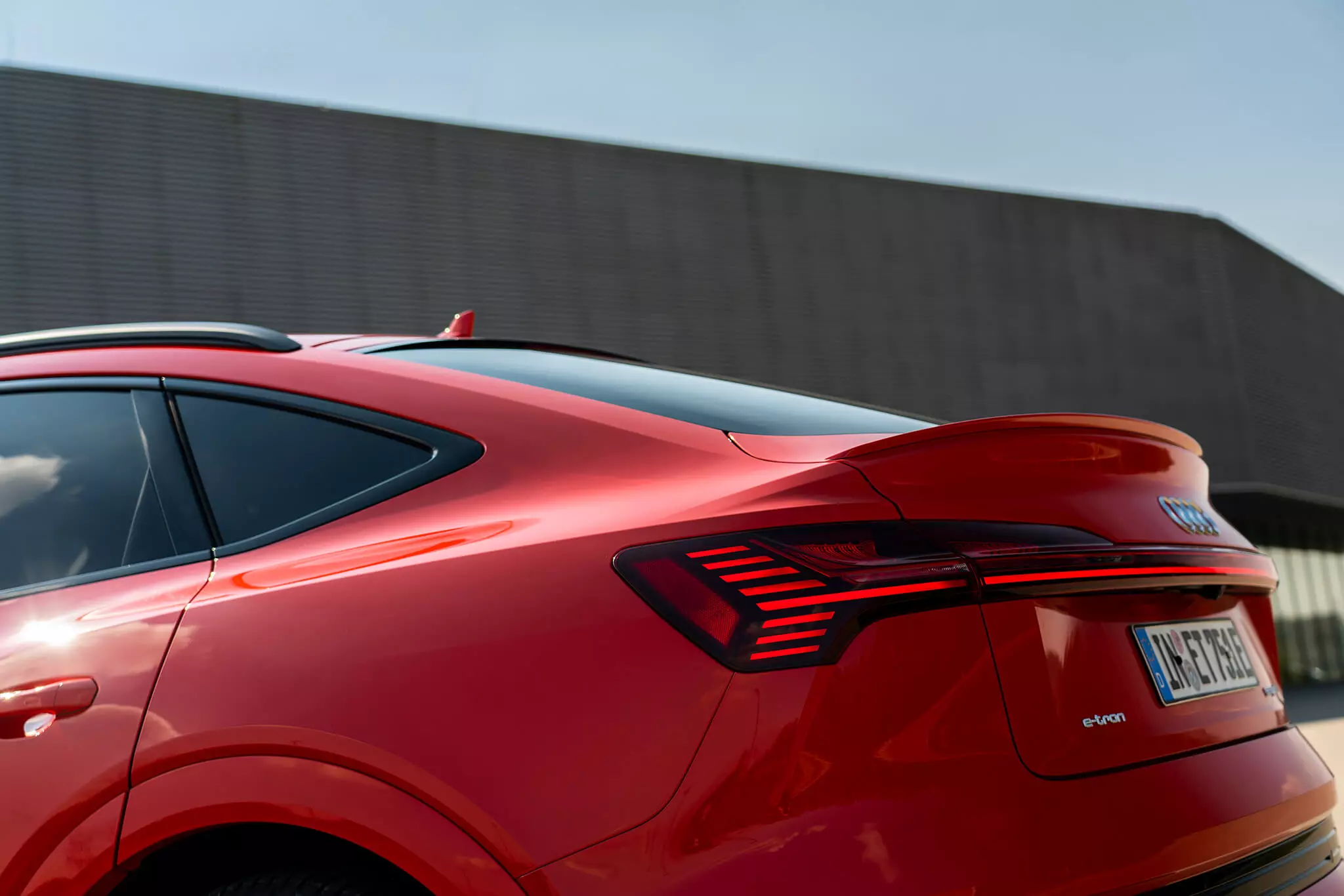
The e-Tron Sportback 55 quattro did not have to “sweat his shirt” to leave behind the sandy terrain and some unevenness (sides and longitudinals) that I challenged it to overcome, showing itself capable of being much more daring, as long as it respected the its height to the ground — ranging from 146 mm, in Dynamic mode or above 120 km/h, up to 222 mm.
An I-Pace reaches 230mm of ground clearance (with the optional air suspension), but has lower all-terrain angles than the Audi; an Audi Q8 is at a distance of 254 mm from the floor and also benefits from more favorable angles for the 4×4; while a Mercedes-Benz EQC does not adjust the height to the ground, which is less than 200 mm.
Subscribe to our newsletter
On winding and sparsely populated roads, going up, you can see that the mastodontic weight is, in fact, there, and that even with a center of gravity similar to that of a saloon (due to the placement of the 700 kilograms of battery on the floor of the car) you can't match the agility of a direct rival. The Jaguar I-Pace (smaller and lighter, albeit hampered by the premature entry into operation of the chassis' electronic aids), manages to be more efficient and sporty than any other electric SUV on sale today.
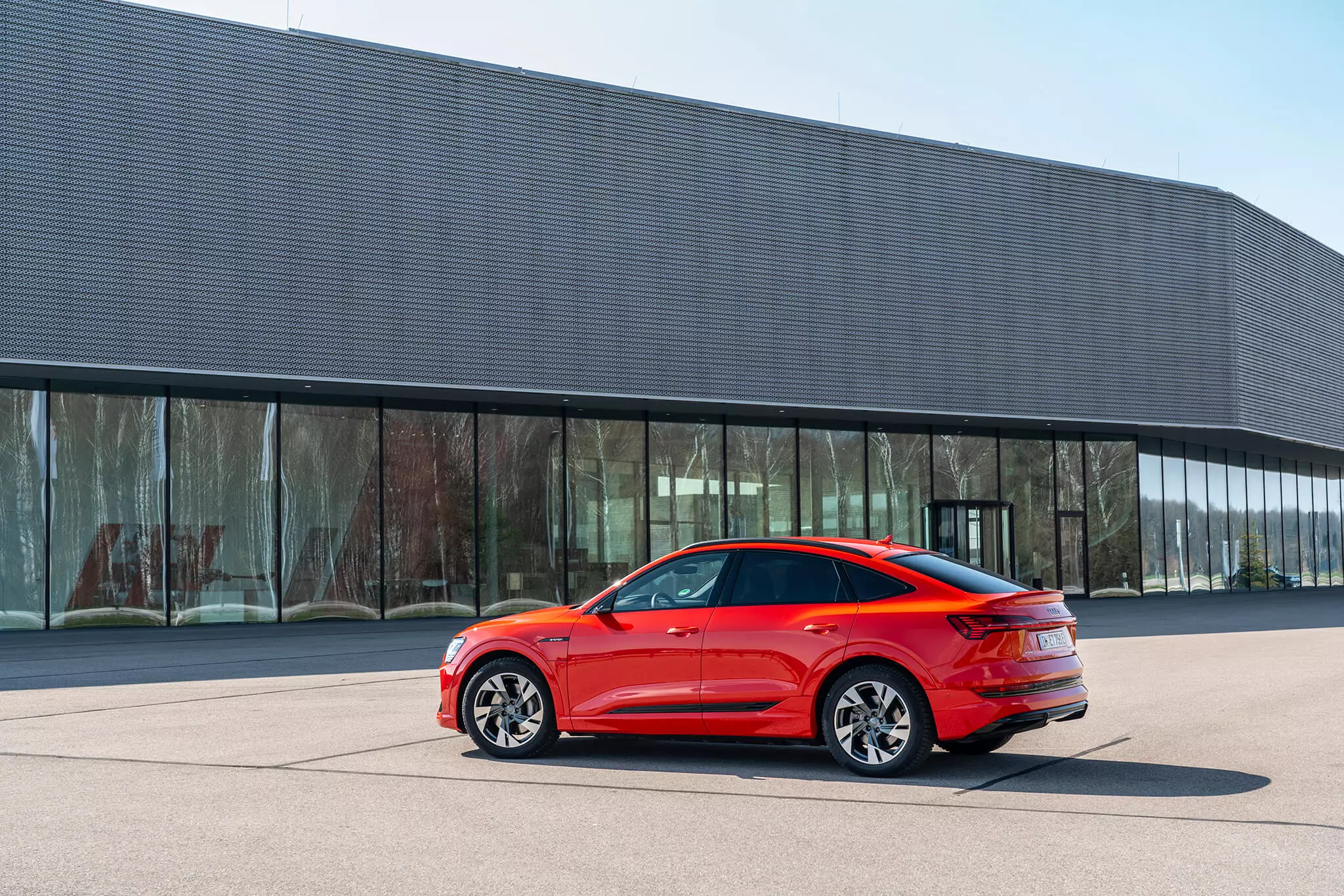
The directional rear axle and active stabilizer bars with 48V technology — used by Bentley in the Bentayga and by Audi in the Q8 — would make the handling of this Audi more efficient and agile. The predominance of rear propulsion even allows, if provoked, to have some overturning reactions, combining the concept of fun with that of an electric car, with all that that has to do with unusual.
In the opposite direction, going downhill, the evolved regeneration system was able to increase the electrical autonomy by about 10 km without making a special effort to do so, just optimizing the recovery capacity.
Recovery helps “honest” autonomy
With the entry into force of the WLTP approval standards, the efficiency numbers (consumption and autonomy) are much closer to reality and this is what I saw in driving the e-Tron Sportback.
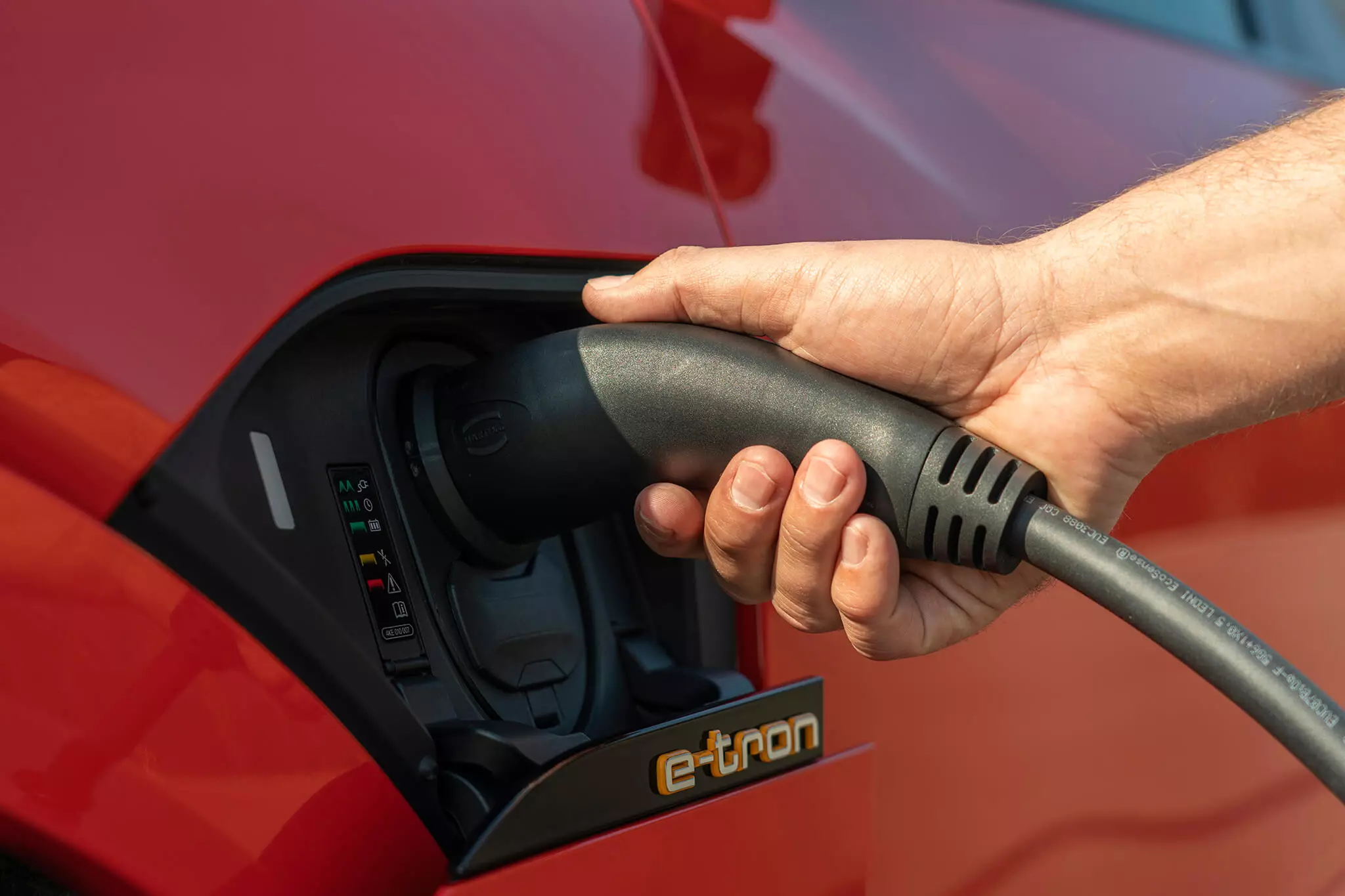
At the end of the route of about 250 km, it had significantly less… 250 km of autonomy than indicated at the beginning of the test. Here, too, the Audi is much more “honest” than the electric Jaguar, whose “real” autonomy is actually much lower than that advertised for this type of use, despite the high consumption of around 30 kWh/100 km, well above from 26.3 kWh to 21.6 kWh officially announced, which is only possible with the precious help of regeneration that Audi says is worth almost 1/3 of the total autonomy announced.
In any case, even potential buyers of the e-Tron 55 Sportback quattro must pay attention to the charging system at their disposal, which is not a recommended car for those who do not have a wallbox (if you use a 2.3 kW domestic outlet with the “Shuko” plug — which the car brings — it takes 40 hours for a full charge…).
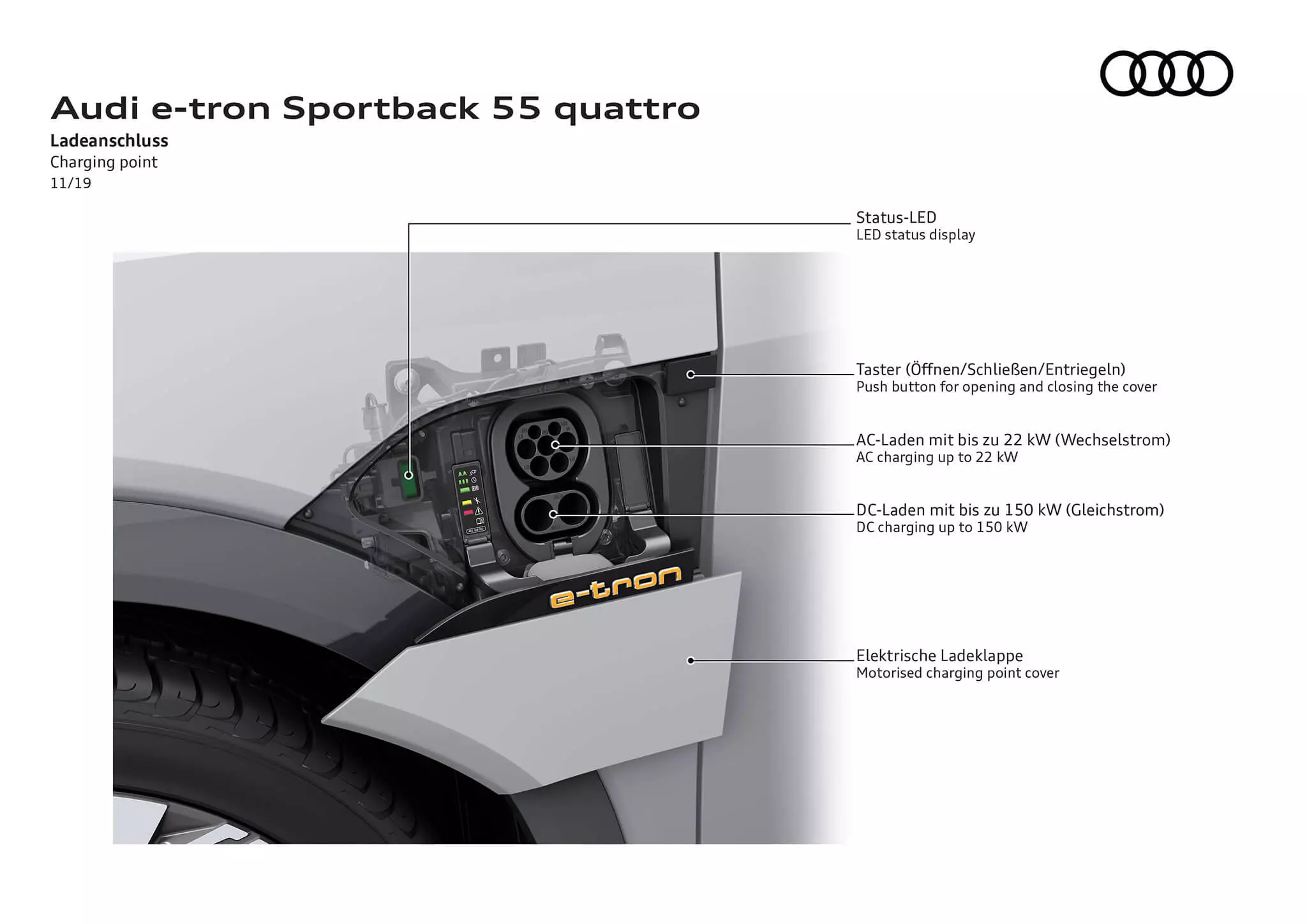
The battery (eight-year warranty or 160,000 km) can store up to 95 kWh of energy and can be charged in fast charging stations with direct current (DC) up to 150 kW (but there are still few…), which means that up to 80% charge can be restored in 30 minutes.
The operation can also be done with alternating current (AC) up to 11 kW, which means a minimum of eight hours connected to the wallbox for a full charge, with a 22 kW recharge available as an option (with a second on-board charger, delaying then five hours, which will only be available a little later). If you just need a little charge, the 11 kW can charge the e-Tron with 33 km of autonomy for every hour connected to the mains.
Audi e-tron Sportback 55 quattro: technical specifications
| Audi e-Tron 55 Sportback quattro | |
|---|---|
| Motor | |
| Type | 2 asynchronous motors |
| Max power | 360 hp (D)/408 hp (S) |
| Max. torque | 561 Nm (D)/664 Nm (S) |
| Drums | |
| Chemistry | Lithium Ions |
| Capacity | 95 kWh |
| Streaming | |
| Traction | On four wheels (electric) |
| Gear box | Each electric motor has an associated gearbox (one speed) |
| Chassis | |
| F/T suspension | Independent Multiarm (5), pneumatics |
| F/T brakes | Ventilated Discs / Ventilated Discs |
| Direction | Electrical assistance; Turning diameter: 12.2m |
| Dimensions and Capabilities | |
| Comp. x Width x Alt. | 4901 mm x 1935 mm x 1616 mm |
| Length between the axis | 2928 mm |
| trunk | 615 l: 555 l at the rear + 60 l at the front; 1725 l maximum |
| Weight | 2555 kg |
| Tires | 255/50 R20 |
| Installments and Consumptions | |
| Maximum speed | 200 km/h (limited) |
| 0-100 km/h | 6.4s (D), 5.7s (S) |
| mixed consumption | 26.2-22.5 kWh |
| Autonomy | up to 436 km |
